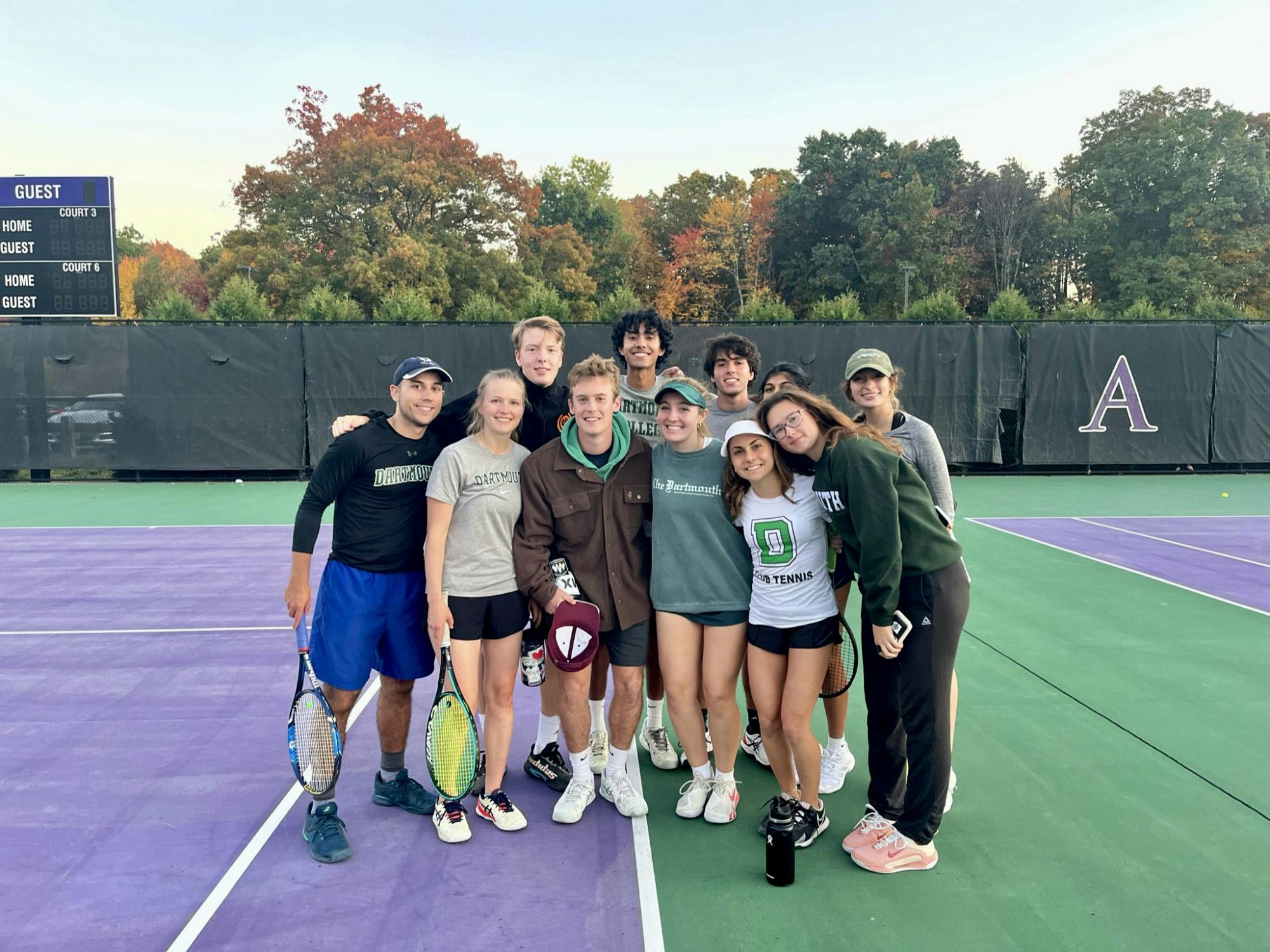Last month, club sports teams held tryouts in search of new players, primarily from the Class of 2027, though all students were welcome. The process began on Sept. 10 at the Student Involvement Fair, where teams set up tables to advertise and introduce themselves to potential new players. In the weeks following the fair, club sports captains sent out emails featuring eye-catching GIFs and brightly colored text as well as important information to attract interested athletes to tryouts.
At Dartmouth, there is a strong interest in club sports, with 33 different club sports teams made up of approximately 1,600 student athletes. Since a majority of club sports teams at Dartmouth are run without coaches, tryouts are largely student-led, and most were organized in a multi-step process to determine the potential of future players, according to various club team co-captains. Certain teams, such as club basketball and club badminton, saw record turnouts and higher competitiveness at tryouts than in years past.
Club basketball had a record-breaking number of students sign up to try out for a spot on the team. The team took 10 new athletes this year, including five ’27s, three ’26s and two ’23s, according to co-captain Alan Ngouenet ’25. Ngouenet said that the team mostly takes first-years and second-years because they like to see students develop during their time with the team.
Club basketball held two days of tryouts, cutting the number of potential new players from 30 to 15 between the first and second day, Ngouenet explained. The hardest part of club basketball is making the final few cuts, he added.
“Everyone has a lot of passion … you don’t want them to be put off from the idea of trying to play,” Ngouenet said.
For club badminton, co-captain Luis Salum ’26, spoke of the difficulty of the tryouts process, as the team narrowed their choices from 50 students down to only eight.
“The hardest part would have to be determining which [students] would have to be cut off,” Salum said. “We also have to take the risk of banking on that person’s potential, and potentially stripping the other person of a chance at the moment.”
Both captains also elaborated on the level of competitiveness expected of their respective teams. For Salum, club badminton erred more on the side of light and casual.
“It is great that we’d be able to win competitions, if ever, but it’s not a deal breaker for us,” Salum explained. “We’re happy regardless of the results.”
According to Ngouenet, club basketball recently signed into the National Club Basketball Association, an intercollegiate club basketball league. As a member of the NCBBA, the Dartmouth Club Basketball A Team already has 15 upcoming games scheduled, naturally necessitating a heightened competitive energy from the team.
“We like playing basketball. We’ll take pretty much any game we can play,” Ngouenet said. “Now during practices, you have to prepare to win a game.”
Ngouenet stressed the importance of the bonds formed between teammates in a club sport. Outside of spending time together at practice, club basketball also does mixers with other sports teams at Dartmouth.
“It’s fun to see guys on the court and see them off the court too, just hanging out,” Ngouenet said. “Our practices, at least when we’re not in the week leading up to a game, are pretty informal.”
For club badminton, the same holds true.
“The most fun with the tryouts is after the tryouts, actually,” Salum said. “A lot of people stay, and we get to talk about badminton in general and just ask for advice and play casually.”
Joseph Quaratiello ’27, one of the players who made it through club basketball tryouts, spoke of this social aspect.
“It seems like they’re really trying to grow the presence of the team,” Quaratiello said.
Quaratiello, who played basketball in high school, wanted to maintain this aspect of his identity as he transitioned into college.
“I wanted to make the team to get to the higher level of play, as opposed to intramural or just for fun,” Quaratiello said. “It’s a combination of just a desire to continue playing basketball as I grow older, meeting new people, having a group of friends there, and honestly just getting organized exercise with people.”
For these club sports teams, there is a balance between a higher, more organized level of play and the social aspect that makes for a strong team. Despite the passion and competition present in each sport, no club is above putting a premium on community — players play the game they love, and students form bonds under that shared interest.




